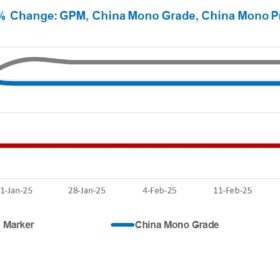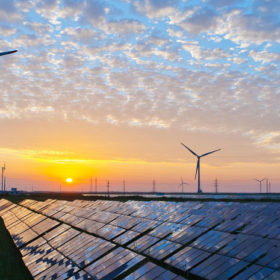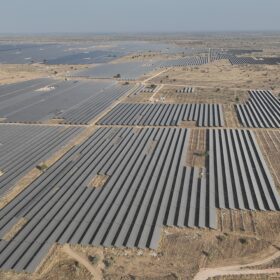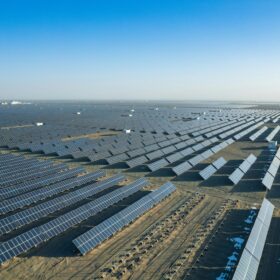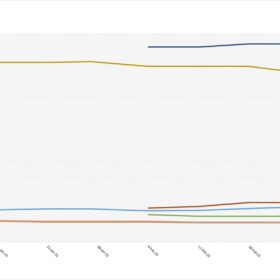Polysilicon market unchanged, awaits policy stimulus
In a new weekly update for pv magazine, OPIS, a Dow Jones company, provides a quick look at the main price trends in the global PV industry.
The role of battery energy storage systems in sustainable data centers
While many data centres have started using solar power as part of their energy sources, they still depend on grid energy because of regulatory issues like discom regulations and banking policies. To enhance the use of green energy and lessen reliance on fossil-fuel-based grid electricity, combining battery energy storage systems (BESS) with hybrid solar and wind power systems is a practical solution.
Solar manufacturing in India: Paving the way for a self-reliant renewable future
As India advances toward its Vision 2047 goals, solar module and cell manufacturing must be at the heart of the renewable energy strategy. While policy interventions like ALMM and production-linked incentives have laid a strong foundation, the next phase requires intensifying domestic raw material manufacturing and supply chains, scaling solar cell production with novel technologies, developing a skilled workforce to support advanced manufacturing, and elevating export competitiveness through quality certifications and trade agreements.
Solar, batteries and wind to make up 93% of 2025 U.S. electricity capacity deployments
The Energy Information Administration projects that 32.5 GW of solar power, 18.2 GW of energy storage, and 7.7 GW of wind generation will be deployed this year, accounting for nearly 93% of total new capacity, which is expected to reach a record 63 GW.
CERC adopts tariff for SECI’s 1.2 GW wind-solar hybrid power projects with assured peak power supply under Tranche VI
The wind-solar hybrid power projects were awarded to four successful bidders at tariffs ranging from INR 4.64/kWh to INR 4.73/kWh.
Challenges of dismantling abandoned wind and solar farms
Researchers studying decommissioned wind and solar farms in Italy, Spain, Venezuela, and Argentina have found that weak regulations risk leaving more abandoned assets in their wake.
Global solar module prices largely stabilize with upward momentum
In a new weekly update for pv magazine, OPIS, a Dow Jones company, provides a quick look at the main price trends in the global PV industry.
The role of ESG SaaS platforms in accelerating the energy transition
Leveraging artificial intelligence, automation, and real-time data, ESG SaaS (software-as-a-service) systems enable companies to optimize energy use, enable and enhance transparency, and comply with regulatory requirements.
Mitigating risks in new PV technologies
The solar energy industry continues to push the boundaries of efficiency and reliability. However, as innovative photovoltaic cell and module technologies emerge, they also bring a new set of challenges in durability and performance. A new report from IEA PVPS Task 13, titled “Degradation and Failure Modes in New Photovoltaic Cell and Module Technologies,” offers a comprehensive analysis of degradation and failure mechanisms in current photovoltaic technologies.
Colored modules for building-integrated photovoltaics
Taking inspiration from the 3D photonic structures on a Morpho butterfly’s shimmering blue wings, scientists at Germany’s Fraunhofer Institute for Solar Energy Systems ISE have developed colored solar panels that can be incorporated into a building’s exterior practically invisibly while maintaining high efficiency.
